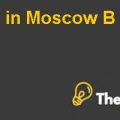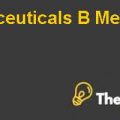Bioinformatics Case Study Solution
Clinical Interpretation
In the proposed study, the method being used to identify the bio markers on the basis of the pathways in Hypertrophic cardiomyopathy (HCM) has been developed, through investigating and analyzing the dynamic interactions between numbers of molecules being related with the pathogenesis through an effective strategy i.e. co-expression network strategy. It has been analyzed that there are 447 differential pathways between normal samples and Hypertrophic cardiomyopathy (HCM) involving purine ribonucleoside monophosphate biosynthesis, folding of actin by CCT/TRiC, TRiC/CCT in actin and tubulin folding and cooperation of prefoldin.
Another altered pathway namely purine ribonucleoside monophosphate biosynthesis has been screened out in the proposed study. Since, the flow of energy has ben generated from the ribose in purine ribonucleoside monophosphates (ibbs JB, 2016), the incapability for maintaining the utilization of ATP might be the HCM primary abnormality (Spindler M, 1998), hence the purine ribonucleoside monophosphate biosynthesis differential pathways might be significant for the HCM progression, which would involve a response to the energy disruption.
Symptoms of Hypertrophic Cardiomyopathy
Patient that are diagnosed with hypertrophic cardiomyopathy sometimes may have no symptoms, because of no significant effect on the patient lives. However some of the common symptoms and complications that most of the patients faced are as follows:
- Difficulty in facing issues related to breathing.
- Inability to function properly or do exercise.
- Serious arrhythmias.
Implications for patients/family
HCM carries a number of implication for both patient and its families. It also affect the young healthy individuals of the family. Therefore it is highly considered to screen the lifestyle of the family members and to get genetic counseling.
HCM is heavily associated with sudden deaths of patients. Because of which the patients that are diagnosed with any such disease are asked to avoid any intense activity and workout. It is also recommended to maintain a balance of activities to keep the adequate level of hydration maintained and avoid any such activities that involve excessive vasodilation.
Moreover a family screening is important as this disease are offend transmitted to other family members through genes. So in order to minimize the complication and identify SCD risk an appropriate steps must be under taken. The screening is done mostly during the adolescence phase when the emergence of LVH is most common.
Early evaluation and screening is commonly suggested when the history of the family has gone through various diseases or other severe concerns. In adulthood, the screening is suggested after every 5 years or in response to the clinical change, due to late development of LVH. (Martin S Maron, 2018)
Mechanisms of disease: hypertrophic cardiomyopathy
Hypertrophic cardiomyopathy (HCM) is the most-widely recognized monogenically acquired type of coronary illness, portrayed by thickening of the left ventricular divider, contractile brokenness, and conceivably deadly arrhythmias. HCM is additionally the most-widely recognized reason for sudden heart demise in people more youthful than 35 years old. Much advancement has been made in the clarification of the hereditary premise of HCM, bringing about the recognizable proof of in excess of 900 individual transformations in more than 20 qualities. Curiously, a large portion of these qualities encode sarcomeric proteins, for example, myosin-7 (otherwise called heart muscle β-myosin substantial chain; MYH7), cardiovascular myosin-restricting protein C (MYBPC3), and heart muscle troponin T (TNNT2). In any case, the sub-atomic occasions that eventually lead to the clinical phenotype of HCM are as yet vague. We examine a few potential pathways, which incorporate modified calcium cycling and sarcomeric calcium affectability, expanded fibrosis, exasperates biomechanical stretch detecting, and hindered cardiovascular vitality homeostasis. An enhanced comprehension of the obsessive components included will result in more noteworthy particularity and accomplishment of treatments for patients with HCM
Key features
- Hypertrophic cardiomyopathy (HCM) is the most-common form of monogenic coronary heart disease, affecting up to 0.2% of the population
The clinical course of HCM is remarkably variable, ranging from lifelong, asymptomatic, mutation-carrier reputation to early sudden cardiac death in adolescents - During the previous 2 decades, plenty growth has been made in unraveling the genetic foundation of HCM; disease-causing mutations have been recognized in over 20 genes, generally encoding sarcomeric proteins
- The molecular mechanisms of HCM areunclear; manageable pathways consist of altered calcium cycling and sarcomeric calcium sensitivity, accelerated fibrosis, disturbed biomechanical stress sensing, and impaired cardiac electricity homeostasis
- An elevated understanding of the pathological mechanisms in HCM need to make bigger the specificity and efficacy of therapy for this condition
Recommendations
The recommended therapy is ICD placement for the patients with HCM, with prior ventricular fibrillation, documented cardiac arrest, hemodynamically significant ventricular tachycardia. The recommended test are listed below;
- Echocardiogram
- Electrocardiogram
- Treadmill stress test
- Holter monitor
- Cardiac MRI
- Cardiac catheterization
The family screening includes;
- Genetic testing
- Echocardiogram
In relation to the family screening of the dieses, the treatment includes;
- Medications
- Septal myectomy
- Septal ablation
- Implantable cardioverter-defibrillator (ICD).....
This is just a sample partical work. Please place the order on the website to get your own originally done case solution.












